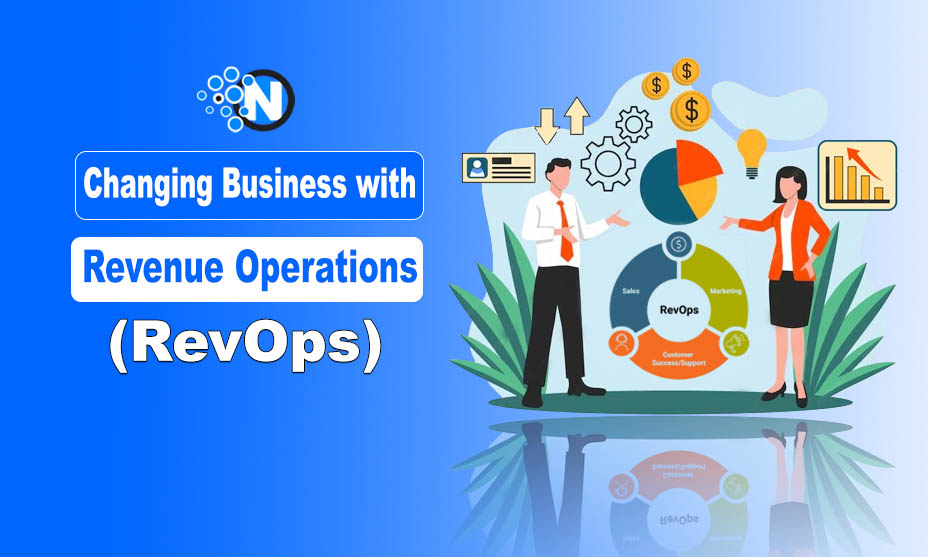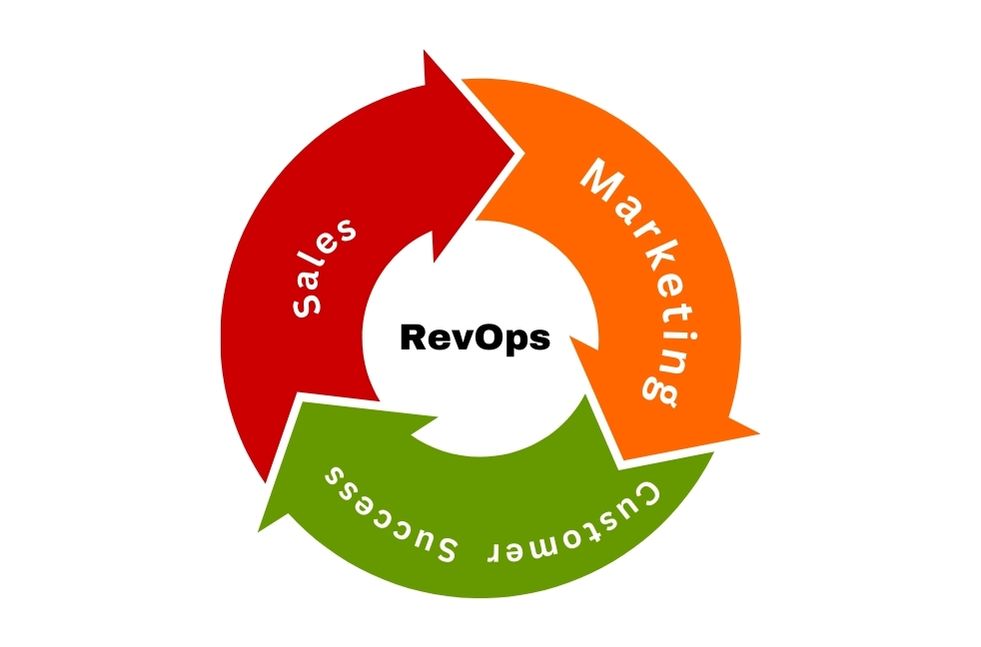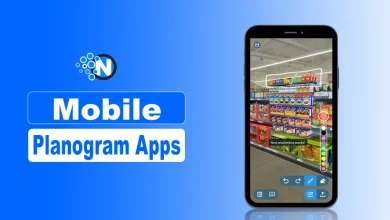Guide to Changing Your Business with Revenue Operations (RevOps)

Companies are realizing the need of matching their sales, marketing, and customer success teams to drive revenue growth in this digital world.
Revenue Operations, sometimes known as RevOps, a strategic approach combining people, systems, and processes to maximize income during the customer lifetime, is fundamentally based on this alignment.
Using RevOps could be a revolution if your company wants to scale, increase efficiency, and stimulate steady development.
In this blog post, I will share my knowledge about the revenue operations approach and how it can boost your bottom line!
What Does RevOps (Revenue Operations) Mean?
RevOps is an approach in which Sales, marketing, and customer success operations are combined at a single platform that produces consistent income.
These departments share data and insights under the RevOps framework instead of operating in silos, therefore improving decision-making, process optimization, and the customer experience by means of data exchange.
With the help of a revenue operation model, businesses can streamline operations, eliminate inefficiencies, and boost revenue.

Why You Need RevOps for Your Business
Traditional corporate structures often misalign sales, marketing, and customer success teams. Its impact may include missed income opportunities, uneven customer experiences, and bottlenecks.
By means of shared measurements and data, RevOps guarantees that every team strives for the same objectives and facilitates more efficient cooperation.
RevOps centralizes data from many departments, offering a single source of truth for all income-related actions. Businesses can then use real-time data to make smart choices, spot trends, and quickly change their strategies to take advantage of opportunities or lower risks.
By coordinating sales, marketing, and customer success teams, RevOps guarantees a flawless customer journey from prospecting to post-sale support. Not only does a consistent and customized experience across all touchpoints raise customer happiness but also drives lifetime value and greater retention rates.
Managing activities that bring in money gets harder as your business grows. Standardized processes and automation introduced by RevOps let your business scale effectively without compromising performance or customer experience.
How to Get Your Business to Use RevOps
Before starting RevOps, carefully evaluate your present operations in sales, marketing, customer satisfaction, and customer success. Bring up areas of data silos, inefficiencies, and misalignment. Your RevOps plan will build on this assessment.
Clearly state the goals you wish to accomplish with RevOps. These objectives should complement your general company goals and could call for either lowering the sales cycle time, raising client retention, or enhancing lead conversion rates. Establishing particular, measurable objectives will direct your RevOps project and enable you to monitor development.
RevOps needs the development of a cross-functional team including people from sales, marketing, and customer success. Driving the RevOps strategy, data management, and maintaining departmental alignment will fall to this team. You could choose to designate a RevOps leader to manage this team and act as a departmental liaison agent.

Invest in tools and technologies since RevOps depends mostly on them to centralize data, automate tasks, and offer insights. Invest in a RevOps platform or combine current solutions to produce a consistent tech stack. Customer Relationship Management (CRM) systems, Marketing Automation Platforms (MAP), and Customer Data Platforms (CDP) systems are among the important technologies.
Establish consistency and efficiency by standardizing processes and metrics across all revenue-generating operations. Create KPIs and shared measurements all teams can monitor and use to gauge performance. This could call for measures such as sales cycle duration, customer lifetime value (CLV), and customer acquisition cost (CAC).
RevOps requires a change in culture toward shared responsibility and teamwork. Promote honest communication among departments, teach RevOps concepts, and acknowledge successes coming from cross-departmental projects. To underline its relevance, leadership should set an example of this cooperative attitude.
Revops is not a set-it-and-forget-it approach; it is a kind of process you need to monitor, analyze, and adjust. Track performance constantly; examine data; and make necessary changes. Review your RevOps objectives, procedures, and technology often to make sure they fit the changing needs and market environment of your company.
Case Studies
To help you understand the effectiveness of RevOps, I am going to share two case studies of different businesses to show how they have successfully implemented this model and boosted their revenue stream.
Case Study 1: Putting RevOps to use in an Accounting Firm in London
Context:
An accounting firm in London provides tax advisory, audit, and financial consulting among other services. From tiny companies to big organizations, the company attracts a varied clientele. Their significant market presence did not help them to match their sales and marketing initiatives, which resulted in ineffective customer onboarding and reduced revenue possibility.
Problem:
Separated departments—the sales and marketing teams worked separately—resulting in an uneven message and recurrent attempts. These teams hardly worked together, which resulted in poor targeting of possible clients.
The sluggish and complex client onboarding procedure caused delays that annoyed new clients which may have resulted in income loss.
Data discrepancies: The company struggled to track important performance indicators, fairly project income, or make wise, data-driven decisions as data varied among departments.
The implementation of RevOps:
The company created a cross-functional RevOps team combining sales, marketing, and client services. Driving alignment between departments and making sure that everyone worked toward shared objectives fell to this team.
Their consolidated Customer Relationship Management (CRM) system helped to unite data across sales, marketing, and client services. This helped the company to establish a single source of truth, therefore enhancing data accuracy and facilitating tracking of client contacts and performance indicators.
The company revamped its customer onboarding process to be more client-oriented and efficient. They shortened the time it took to onboard new customers by thirty percent by standardizing the process and automating repetitious processes, therefore increasing client happiness and accelerating income realization.
Lead conversion rates and client acquisition expenses are two shared metrics the RevOps team developed across sales and marketing. Better performance tracking and changes made possible by this alignment let both teams pursue the same goals.
The results are:
Client retention rates rose 20% in the first year as the firm simplified the onboarding process and offered a consistent client experience.
Revenue Growth: A 15% increase in new client acquisition followed from a more efficient lead generation and conversion process produced by the alignment between sales and marketing.
By means of centralized data, the company raised its forecasting accuracy and made more informed strategic decisions, so improving resource allocation and increasing profitability.
Case Study 2: Putting RevOps to Work in a SaaS Software Company
History:
A SaaS company that is growing, offers a tool that helps companies run their businesses more efficiently. The business had grown significantly but found it difficult to scale its revenue processes to correspond with its growing clientele.
Problems:
Operating in silos, the teams in marketing, sales, and customer success created a disconnected customer journey. The whole customer experience suffered when prospects and consumers received conflicting messages and support.
Many of the company’s manual, time-consuming sales and customer success systems resulted in inefficiencies and bottlenecks in both obtaining new and keeping current clients.
The company lacked a consolidated data system, which made it challenging to monitor consumer contacts during the lifetime or evaluate the success of their sales and marketing campaigns.
Implementing RevOps:
The company created a RevOps team of representatives from marketing, sales, and customer success, fostering cross-sectoral alignment. This team was assigned to coordinate departments’ goals, procedures, and strategies to produce a more unified customer experience.
Lead scoring, follow-up emails, and customer onboarding—among other repetitive chores in sales and customer success—they invested in automation solutions to streamline. This let the teams concentrate on more valuable tasks, hence enhancing output and efficiency.
To produce a smooth data flow, the firm combined its CRM, marketing automation, and customer success systems. From first contact to continuous assistance, this integration gave a complete picture of the customer lifecycle, therefore facilitating improved decision-making and individualized client contacts.
Setting up dashboards and reports tracking important metrics such customer acquisition cost (CAC), customer lifetime value (CLV), and churn rates helped the RevOps team to use a data-driven approach to decision-making. This let the business spot trends, maximize campaigns, and instantly change tactics.
The results are:
Higher customer satisfaction results from a more unified and customized customer journey, which helped the business to see a 25% boost in these ratings, therefore influencing referrals and renewal rates.
By 20%, automation and process enhancements shortened the typical sales cycle, therefore allowing the business to close agreements faster and boost income more quickly.
The company’s fast expansion was supported by the data-driven approach and combined tech stack that let it effectively scale its operations, so preserving the quality of service or customer experience.
What is Concluded!
These case studies show how effectively RevOps is changing companies in many different sectors. Whether your business is a SaaS software company or an accounting firm, using RevOps can enable you to simplify processes, enhance client experience, and generate notable income increase.
The secret is to concentrate on data centralizing, team alignment, and use of technology to produce a coherent and effective revenue-generating engine. However, you should assess your current operations and set goals you want to achieve with this approach. In this way, you will be on the right track to increase your revenues by utilizing all your available resources.




